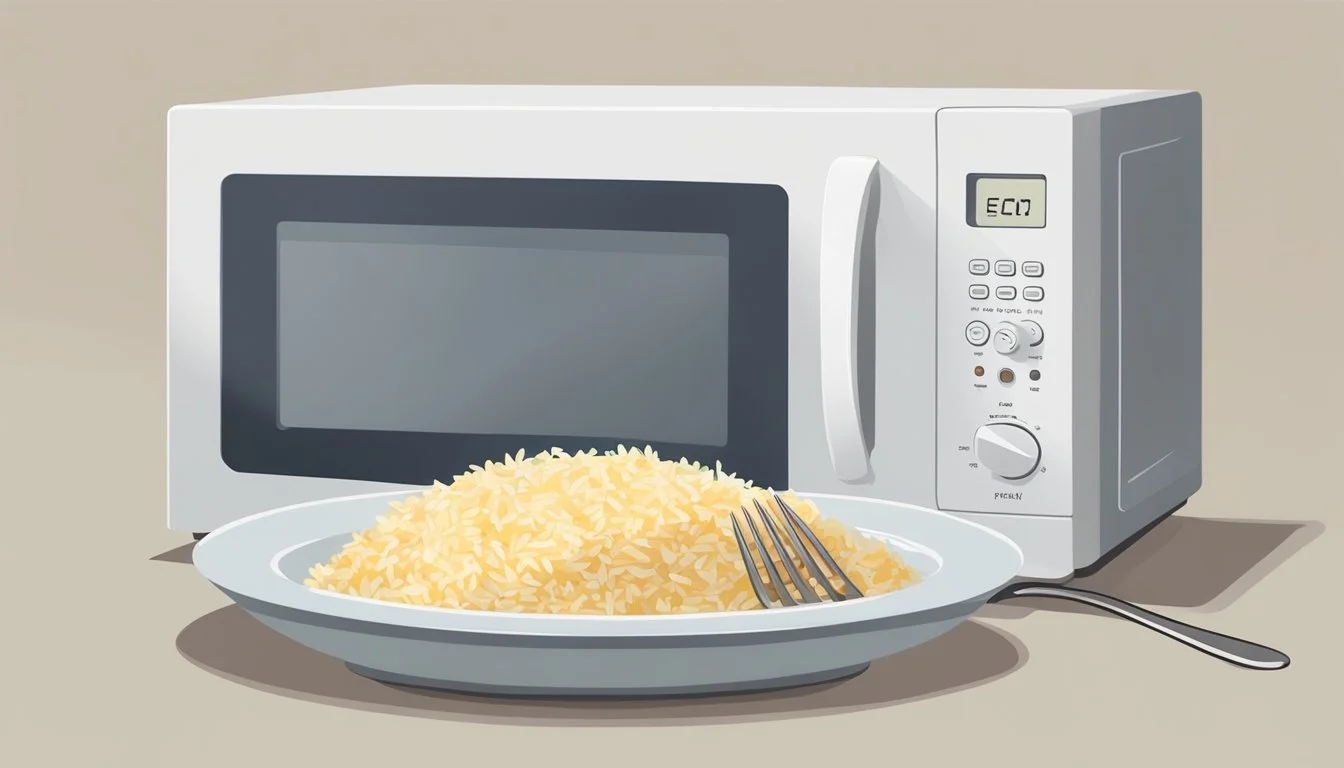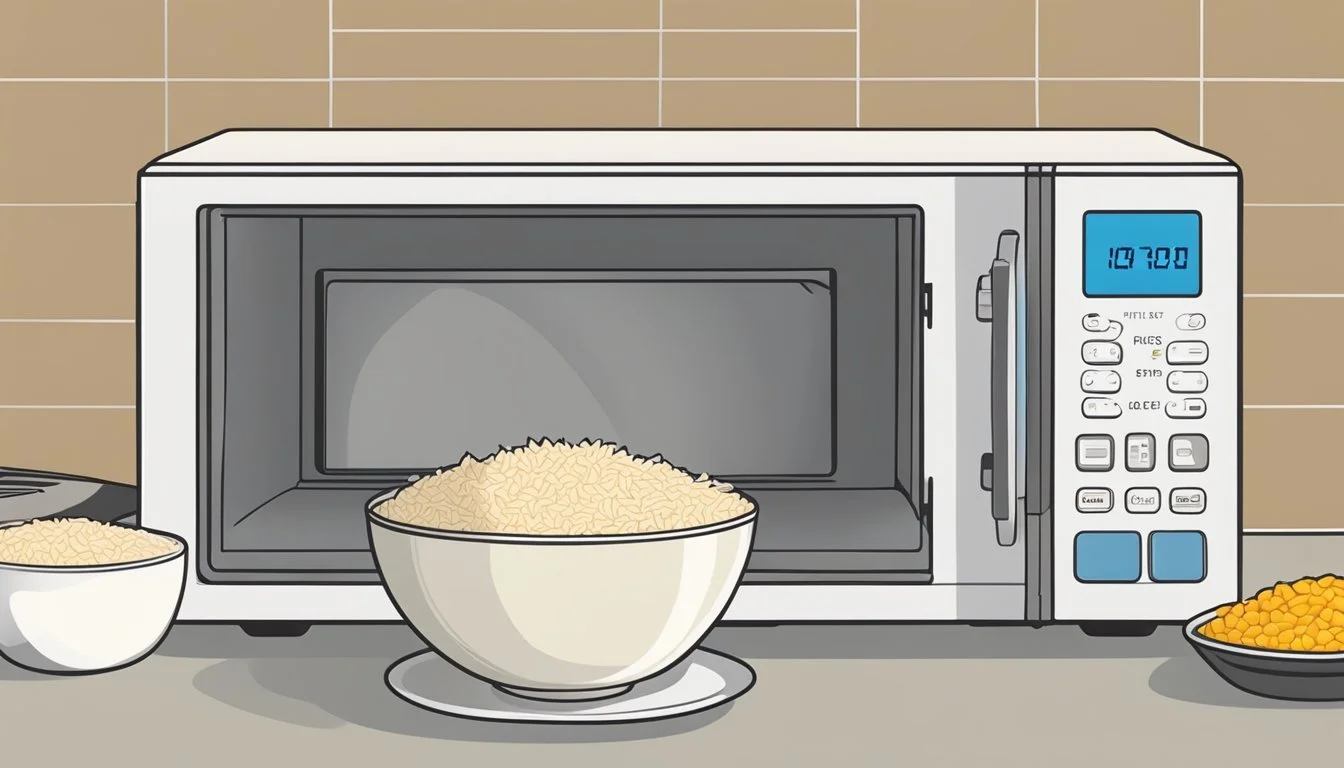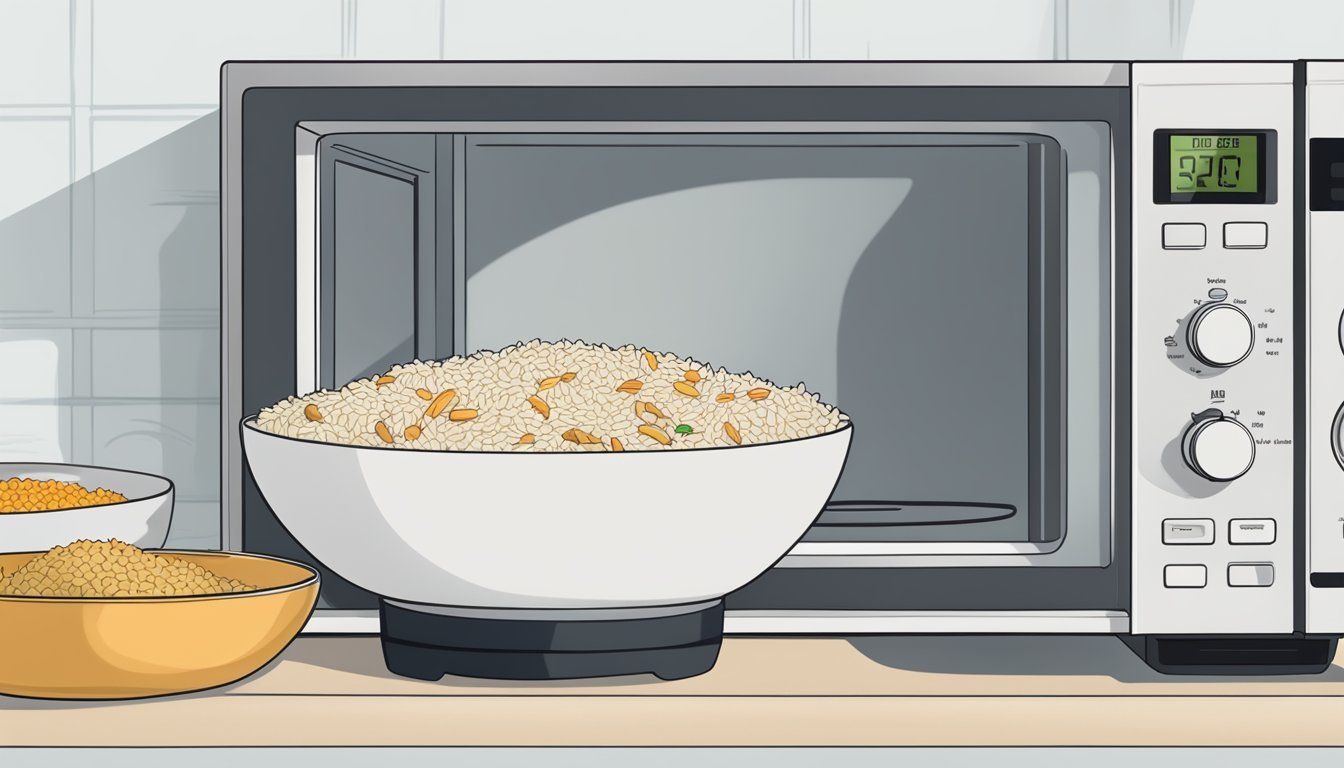How to Reheat Gluten-Free Rice Pilaf
Quick and Easy Methods
Reheating gluten-free rice pilaf doesn't have to be a challenge. In fact, with the right techniques, you can enjoy a delicious and tender dish that tastes just as good as when it was first made. To combat dryness, sprinkle some water or broth over the top of your rice pilaf before reheating. This additional moisture ensures that the reheated dish remains tender and flavorful.
For those using a microwave, covering the dish with microwave-safe plastic wrap and setting the microwave on medium power (50%) for around two minutes per cup of rice can work wonders. This method helps retain moisture and evenly heats the pilaf. For stovetop reheating, gently warming the rice in a pan with a splash of water or broth while stirring occasionally is also effective.
By following these simple steps, anyone can maintain the quality of their gluten-free rice pilaf. Whether served as a side dish or part of your main meal, reheated rice pilaf can be as delicious and satisfying as the first serving.
Benefits of Gluten-Free Rice Pilaf
Choosing gluten-free rice pilaf brings several notable benefits, particularly for those with celiac disease or gluten sensitivities.
For individuals with celiac disease, consuming gluten-free rice pilaf can help avoid severe digestive issues and long-term health complications. They can enjoy this dish without worrying about gluten-related reactions.
Rice pilaf often features a nutty flavor that appeals to many palates. This flavor profile aligns well as part of an assortment of side dishes, enhancing the overall dining experience.
Using organic ingredients in gluten-free rice pilaf can further increase its health benefits. Organic rice tends to have fewer pesticides and artificial additives, contributing to cleaner eating.
Gluten-free rice pilaf can fit effortlessly into a balanced diet, providing essential nutrients like vitamins, minerals, and fiber. It serves as a versatile base that can be paired with vegetables, meats, or legumes.
Adopting a gluten-free diet can also encourage healthier eating habits. Those who opt for gluten-free rice pilaf often cook more meals from scratch, allowing for better control over ingredients and portion sizes.
The appeal of gluten-free rice pilaf extends beyond those with dietary restrictions. The naturally gluten-free grain can cater to various health-conscious individuals, making it a desirable addition to everyday meals.
Ingredients Overview
Choosing the best ingredients for gluten-free rice pilaf ensures a delicious and nutritious dish. Focus on the type of rice, the broth, fresh vegetables, and appropriate seasonings for optimal flavor and texture.
Choosing the Right Rice
Selecting the correct type of rice is crucial. Basmati rice is often preferred for its fluffy texture and subtle flavor. Ensure the rice is gluten-free and free from cross-contamination by checking the label.
Avoid sticky rice types such as sushi rice, which can alter the dish’s texture. Use a ratio of 1 cup of rice to 2 cups of broth for the best results.
Gluten-Free Broth Selection
A good broth enhances the flavor of the pilaf. Chicken broth is a popular choice, but vegetable or beef broth can also be used depending on dietary preferences.
Ensure the broth is certified gluten-free to avoid any gluten contamination. Read labels carefully for hidden gluten sources like wheat-based thickeners.
Selecting Suitable Vegetables
Incorporating fresh vegetables adds nutrition and color. Carrots, celery, and onions are traditional choices. Dice them finely to ensure even cooking and texture consistency.
Other vegetables like bell peppers or peas can also be added. Saute the vegetables in olive oil with a bit of garlic for extra flavor before combining them with the rice.
Herbs and Seasonings for Flavor
Seasonings elevate the taste of rice pilaf. Salt and black pepper are basics. Fresh or dried thyme and parsley add a fragrant note.
For a richer taste, incorporate a bay leaf during cooking and remove it before serving. Adjust seasoning levels to taste, ensuring a balanced blend that enhances but does not overpower the rice and vegetables.
Preparing the Rice Pilaf
Proper preparation of gluten-free rice pilaf involves multiple steps to ensure the best flavor and texture. Key steps include washing and soaking the rice, sautéing aromatics and vegetables, and toasting the rice to enhance its texture.
Washing and Soaking Rice
To achieve fluffier, less sticky rice, it is important to wash and soak the rice beforehand. Place the rice in a fine mesh strainer and rinse it under cold running water. This step removes excess starch, which can make the rice clump together.
Soak the washed rice in water for about 30 minutes. Soaking can help the rice cook more evenly. After soaking, drain the rice thoroughly using the strainer.
Sautéing the Aromatics and Vegetables
Start by heating a mixture of olive oil and butter in a large, deep pan over medium heat. This combination adds rich flavor to the dish. Add finely chopped onions and garlic once the oil is hot. Sauté until they become translucent and fragrant, usually taking about 2-3 minutes.
Next, include other vegetables like diced carrots and celery if desired. Continue sautéing until the vegetables soften, which usually takes about 10 minutes. This process enhances the flavor profile of the pilaf significantly.
Toasting the Rice for Texture
Once the aromatics and vegetables are well sautéed, add the soaked and drained rice to the pan. Stir the rice to coat it thoroughly with the oil and butter. This step is crucial as it helps to lock in the flavors of the aromatics and adds a slight nuttiness to the rice.
Toast the rice for about 3-4 minutes, stirring occasionally. The goal is to give the rice a light golden hue without burning it. Toasting contributes to a better texture and helps the rice remain separate after cooking.
By following these detailed steps, you’ll lay the foundation for a delicious gluten-free rice pilaf.
Reheating Methods
Reheating gluten-free rice pilaf effectively requires attention to maintaining moisture and texture. Here are detailed methods for using the stovetop, oven, and microwave, along with tips to prevent dryness.
Stovetop Reheating
For stovetop reheating, place the rice pilaf in a pan over low heat. Add a small amount of liquid, such as water, broth, or stock, to restore moisture. Cover the pan with a lid to help retain steam and heat evenly.
Occasionally stir the pilaf to prevent it from sticking to the pan and ensure even reheating. Simmer gently and avoid high heat, as it may cause the rice to dry out or become too crispy. This method preserves the rice’s texture and flavor.
Oven-Based Reheating
To reheat rice pilaf in the oven, preheat the oven to 350°F (175°C). Transfer the pilaf to an oven-safe dish and add a few tablespoons of liquid, like broth or water. Cover the dish with aluminum foil to keep the moisture in.
Place the dish in the oven and reheat for about 15-20 minutes, or until it reaches your desired temperature. Oven reheating works well for evenly heating large batches of pilaf without drying it out. This method is especially useful for maintaining the pilaf's flavor integrity.
Microwave Reheating
For microwave reheating, transfer the rice pilaf to a microwave-safe bowl. Add a splash of water or broth to help maintain moisture. Cover the bowl with a microwave-safe lid or a damp paper towel to trap steam.
Microwave on high for 2-3 minutes, stirring once halfway through. Allow the rice to rest for a minute before serving. Be cautious not to overheat, as microwave reheating can sometimes lead to uneven heating and dryness.
Tips for Preventing Dryness
Preventing dryness when reheating rice pilaf is crucial. Always add liquid—whether it’s water, broth, or stock—to help maintain the rice’s moisture content.
Cover the dish with a lid or foil to trap steam. Stir occasionally during stovetop and microwave reheating to avoid hotspots and ensure even heat distribution. Consider adding a small amount of butter or oil to enhance flavor and moisture.
By following these methods, your gluten-free rice pilaf will retain its delicious texture and taste, even as leftovers.
Serving Suggestions
Rice pilaf is a versatile dish that pairs well with various main courses and can be adapted for different dietary preferences.
As a Side Dish: Serve rice pilaf alongside grilled chicken or lamb kebabs for a satisfying meal. The aromatic flavors of pilaf complement a variety of meats.
For Vegetarian and Vegan Diets: For a plant-based option, combine the pilaf with roasted vegetables or a hearty vegetable stew. It's also an excellent accompaniment to stuffed peppers or mushrooms.
Holiday Meals: Include rice pilaf as a side dish during Thanksgiving. It pairs well with traditional dishes like roasted turkey and green beans.
Quick Table:
Main Course Rice Pilaf Pairings Chicken Grilled or roasted chicken breast Kebabs Lamb or beef kebabs Vegetarian Stuffed peppers, roasted vegetables Vegan Grilled tofu, vegetable stew Thanksgiving Roasted turkey, green beans
Rice pilaf's adaptability makes it easy to integrate into various meal plans and festive menus, ensuring that there is something for everyone.
Storing Leftovers
Properly storing leftover gluten-free rice pilaf ensures food safety and maintains its delicious taste. Focus on quick cooling, effective refrigeration, and correct freezing and reheating methods.
Cooling and Refrigerating
To safely store rice pilaf, it is important to cool it quickly. Spread the pilaf on a baking sheet in a thin layer to allow it to cool evenly.
Once cooled, transfer the rice pilaf to an airtight container. Ensure the container is labeled with the date to keep track of freshness. Store in the refrigerator immediately.
Leftovers should be consumed within 1-2 days to maintain flavor and texture. Always check for any off smells or signs of spoilage before reheating.
Freezing Tips
For longer storage, freezing rice pilaf is an excellent option. Place the cooled pilaf into freezer-safe containers or resealable plastic bags.
Remove as much air as possible to prevent freezer burn. Label the containers with the date of storage. When freezing portions, flatten the bags for easier stacking and quicker thawing.
Frozen rice pilaf can be stored for up to 3 months. Use within this period for best results.
Reheating from Frozen
To reheat rice pilaf from frozen, remove it from the freezer and transfer it to an oven-safe dish. Cover with foil to retain moisture and prevent drying out.
Preheat the oven to 350°F (175°C) and bake for about 20-30 minutes. Stir midway through to ensure even heating.
Alternatively, reheat in a microwave-safe container. Add a small amount of water, cover loosely, and microwave on medium power, stirring occasionally. This method is quicker, requiring about 5-7 minutes. Always check that the pilaf is heated through before serving.
Avoiding Gluten Cross-Contamination
Cross-contamination is a serious concern for those with celiac disease. To prevent gluten contamination in a gluten-free kitchen, careful planning and organization are essential.
Kitchen safety starts with clean cooking surfaces. Ensure countertops and cooking areas are thoroughly wiped down before preparing gluten-free dishes. Dedicated tools make a big difference. Use separate cutting boards, knives, and utensils specifically for gluten-free cooking.
Storage tips can also help. Store gluten-free ingredients in separate, clearly labeled containers. Keep these containers away from gluten-containing items to prevent accidental exposure.
Toaster bags, squeeze bottles, and separate jars of condiments can further minimize the risk. These items prevent crumbs and other gluten particles from contaminating gluten-free foods.
Creating a safe cooking environment involves communicating with everyone in the household. Ensure that all family members or roommates understand the importance of avoiding cross-contact.
Buying certified gluten-free products adds an extra layer of protection. Products with gluten-free certification have undergone rigorous testing to ensure they meet safety standards.
By following these practices, the risk of gluten cross-contamination can be significantly reduced, creating a safer environment for gluten-free cooking.
Customizing the Recipe
Customizing gluten-free rice pilaf allows for endless experimentation with ingredients and flavors. Whether making it vegan, adding nutritional variants, or incorporating unique flavors, there are many ways to elevate this dish to suit different dietary needs and taste preferences.
Making it Vegan or Vegetarian
For a vegan or vegetarian version, ensure to use vegetable broth instead of chicken broth. Consider adding a variety of vegetables like bell peppers, peas, or carrots for enhanced flavors and textures.
Nuts and seeds such as pistachios or almonds offer a crunchy contrast and additional nutrients. For extra protein, consider incorporating chickpeas or tofu cubes. To make the dish vegetarian, use a gluten-free orzo substitute and dairy-free butter or oil to keep the richness.
Adding Nutritional Variants
To boost the nutritional profile of the rice pilaf, incorporate ingredients rich in vitamins and minerals. Leafy greens like spinach or kale can be added towards the end of cooking to maintain their nutrients.
Pomegranate arils not only introduce a burst of color but also provide antioxidants and a sweet-tart flavor. Spices like turmeric and curry powder offer anti-inflammatory benefits and create depth in taste.
For an added protein boost, quinoa can be mixed with the rice. Use nuts like almonds for added vitamin E and healthy fats. Enhancing the dish with such ingredients can transform it into a more balanced and healthful meal.
Incorporating Different Flavors
Experimenting with different spices and additions can significantly alter and enhance the flavor of the gluten-free rice pilaf. A touch of curry powder or turmeric can provide a warm, earthy taste.
Dried fruits such as raisins or cranberries bring in a sweet contrast that pairs well with the savory rice. Herbs like cilantro, parsley, or dill can be added fresh at the end of cooking to offer a burst of freshness.
Consider using vegetable or mushroom broth instead of water for cooking the rice to deepen the underlying flavor. Adding a bit of lemon zest or juice can give a bright finish to the dish.








